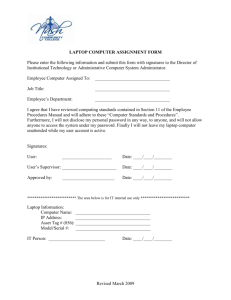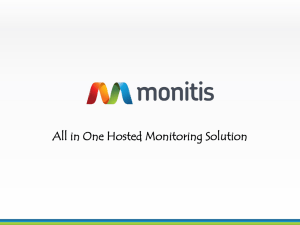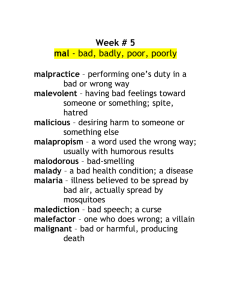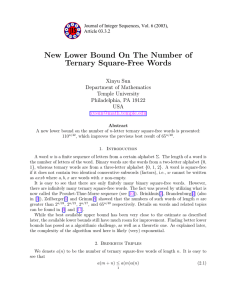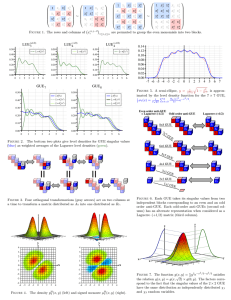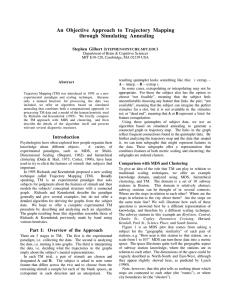Is data sharing the privilige of a few?
advertisement
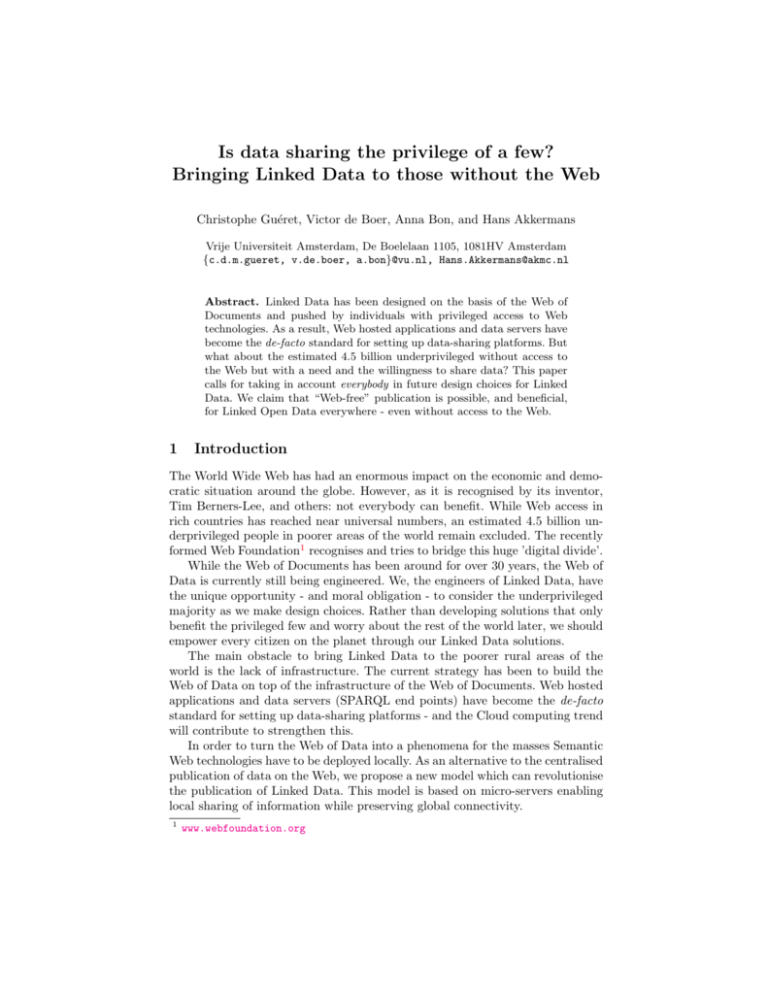
Is data sharing the privilege of a few?
Bringing Linked Data to those without the Web
Christophe Guéret, Victor de Boer, Anna Bon, and Hans Akkermans
Vrije Universiteit Amsterdam, De Boelelaan 1105, 1081HV Amsterdam
{c.d.m.gueret, v.de.boer, a.bon}@vu.nl, Hans.Akkermans@akmc.nl
Abstract. Linked Data has been designed on the basis of the Web of
Documents and pushed by individuals with privileged access to Web
technologies. As a result, Web hosted applications and data servers have
become the de-facto standard for setting up data-sharing platforms. But
what about the estimated 4.5 billion underprivileged without access to
the Web but with a need and the willingness to share data? This paper
calls for taking in account everybody in future design choices for Linked
Data. We claim that “Web-free” publication is possible, and beneficial,
for Linked Open Data everywhere - even without access to the Web.
1
Introduction
The World Wide Web has had an enormous impact on the economic and democratic situation around the globe. However, as it is recognised by its inventor,
Tim Berners-Lee, and others: not everybody can benefit. While Web access in
rich countries has reached near universal numbers, an estimated 4.5 billion underprivileged people in poorer areas of the world remain excluded. The recently
formed Web Foundation1 recognises and tries to bridge this huge ’digital divide’.
While the Web of Documents has been around for over 30 years, the Web of
Data is currently still being engineered. We, the engineers of Linked Data, have
the unique opportunity - and moral obligation - to consider the underprivileged
majority as we make design choices. Rather than developing solutions that only
benefit the privileged few and worry about the rest of the world later, we should
empower every citizen on the planet through our Linked Data solutions.
The main obstacle to bring Linked Data to the poorer rural areas of the
world is the lack of infrastructure. The current strategy has been to build the
Web of Data on top of the infrastructure of the Web of Documents. Web hosted
applications and data servers (SPARQL end points) have become the de-facto
standard for setting up data-sharing platforms - and the Cloud computing trend
will contribute to strengthen this.
In order to turn the Web of Data into a phenomena for the masses Semantic
Web technologies have to be deployed locally. As an alternative to the centralised
publication of data on the Web, we propose a new model which can revolutionise
the publication of Linked Data. This model is based on micro-servers enabling
local sharing of information while preserving global connectivity.
1
www.webfoundation.org
2
Data sharing for individuals without Web access
ICT has the potential to play a major role in social development and the empowerment of people. Yet, 4.5 billion people, mainly in developing countries, do
not have access to the Web. These individuals do however produce and generate
data and knowledge they are willing to share, even without having access to the
infrastructure of the Web. They can benefit from Linked Data right now !
Example 1: Rural communities in the Sahel In rural areas in e.g. Burkina Faso
and Mali, communication is voice-based, since many people cannot read or write.
Mobile phone and community radio are the main channels for information and
communication. To provide a voice-platform for local knowledge sharing, mobile
voice services are currently being developed and deployed locally, as part of the
EU-funded VOICES project2 . These services are developed in close dialogue with
people from rural communities, local radio stations, and local ICT entrepreneurs,
as to make them useful in the local context. The voice-services are hosted locally,
on “micro-servers” that can be accessed by simple first-generation mobile phones,
through inexpensive local phone-lines [1].
One such voice-service allows, e.g., to issue a voice message that is resent to
several phones, like a sort of “voice-Twitter”. People can react on it and access
or leave a voice message. People can receive the voice message translated into
their own language, based on their user-profile. The voice-messages are stored
in a repository, hosted on the local micro-server. This information might be interesting to people in other regions as well. By opening the repositories of voice
messages using Linked Data principles to similar services in other regions, the
information can be shared over a wider area and serves more people. As RDF is
particularly suited to abstract over the multiple languages, and to present a uniform model for the data, and facilitating its re-use across different communities,
Linked Data furthers enhance knowledge sharing capabilities.
Example 2: Children collaborating in knowledge creation “One Laptop Per Child”
(OLPC) is a non-profit organisation whose goal is to empower the world’s poorest
children through education by providing them with a rugged, low-cost, low-power
and connected laptop suitable for usage in developing countries: the XO. This
device connects them to each other and to the World via the Internet. The learning platform “Sugar” powering the XO promotes collaborative learning through
activities that encourage critical thinking. It has been designed from the ground
up especially for children, is available in 25 languages and is being used daily by
almost two-million children in more than forty countries.
Collaboration is a key aspect of Sugar which translates into extended sharing capabilities between activities. The drawing activity, for instance, allows for
many children to collaborate on the same drawing at the same time. The same
applies for the text editor, the discussion rooms and others. This data sharing is
still however activities-centric. Moreover, the current data model used in Sugar
2
http://www.mvoices.eu
doesn’t easily cope with multi-lingual information. The use of Semantic Web
technologies would allow cross-domain re-use of multi-lingual data.
The community project SemanticXO [2] which started in October 2010 is
about deploying semantic technologies in Sugar to create new data sharing opportunities across applications. Although school server are used in some schools,
we can not consider having a triple store per school dedicated to storing the
triples generated by the activities. Besides, the XO are meant to be carried
home by the children who owns the device and the connectivity to a school
server could not be ensured. The solution taken in SemanticXO is to setup a
dedicated triple store directly on the XO.
3
Linked Data with Web-free micro-servers
Bringing Linked Data to the masses yields both technological and societal issues.
As Linked Data engineers we hereafter focus on the first aspect but we acknowledge that micro-servers won’t solve everything and suggest to phrase this duality
as a call for multidisciplinary research.
The design principles of Linked Data allows for a given data set to be seen
as a collection of triples. Classically, a single machine - eventually backed up by
a cluster - is used to store all the triples and is accessed through the Web. But
this set of triples can also be scattered over, and edited by, several machines
acting individually but collectively reproducing the behaviour of a centralised,
Web hosted, service. By analogy with the concept of “microgrid” for energy
production3 , we refer to these machines as “micro-servers” and present them as
an alternative to centralised hosting services.
Micro-server architecture Micro-servers are machines with limited capacity aimed
at storing and serving locally relevant Linked Data. They are connected devices
that can exchange data with each other and eventually connect to the Internet
whenever such connection is available. Considering the rapid progress of mobile
technologies, we envision concrete implementation of micro-servers for Linked
Data as phones or tablets applications and/or operating system extensions in
the near future. We note that these low-powered devices with passive cooling
and no moving parts are particularly suited to usage in African countries where
dusty environment and lack of electricity can be an issue.
A first micro-server is under active development under the context of SemanticXO. This micro-server is based on the software stack of the XO and is
implemented in one of these low-end laptop designed for usage by kids in developing countries. Our test device is an XO of the first generation with a 433Mhz x86
CPU, 256MB of RAM and 1GB of flash memory 4 . First tests showed that this
device can be used to store 50k triples while answering basic SPARQL queries[2].
The performances later observed showed satisfactory performances for practical
use as no significant latency was observed in the developed activities.
3
4
http://en.wikipedia.org/wiki/Distributed_generation#Microgrid
http://laptop.org/en/laptop/hardware/specs.shtml
Challenges As one would expect, there are challenges to overcome when aiming
at using Linked Data without the Web and using a swarm of micro-servers instead of a single machine. The proposed de-centralised publication scheme breaks
with the traditional centralised control of data and thus poses new problems with
respect to security, consistency, reliability and de-referencability of the data.
– Security We must ensure that micro-servers are legitimate data providers of
the data they serve. Without a central authority, any peer could potentially
declare itself a data provider for any data set.
– Consistency Every micro-server produces data and thus may come to minting URIs or re-using others. There must be a control mechanism ensuring
that URIs are re-used across micro-servers when applicable and that no collision happens for minted URIs.
– Reliability A solar-powered micro-server deployed in a rural area can not
have the same guaranteed up-time as a grid-powered server deployed in a
data center. There is thus a need for data duplication amongst the swarm
of micro-servers to increase data availability and provide a reliable storage
of it.
– De-referencability Considering Linked Data without the Web also removes
the presence of DNS, used to resolve mappings from host names to IPs. An
alternative will have to be found to provide HTTP de-referencability without
relying on the usage of paid level domain names (PLDs) which implies an
access to the DNS architecture.
4
Looking at the future...
Linked Data represents a significant progress with a huge potential impact. But
to really make a difference everyone must gain access to it. 10 years of developments and design choices focused around Web systems and centrally hosted
triple stores have kept Linked Data out of reach out 4.5B of the world’s citizens.
These individuals are also potential data consumers and producers (the so called
“prosumers”) that could benefit from the advances Linked Data represents in
terms of Knowledge representation and reasoning.
We do have the opportunity to adjust our design principles, best practices
and guide-lines to ensure Linked Data will not become the privilege of less than
a third of the world’s population. Let’s seize the opportunity while Linked Data
is still in its infancy to make sure that everyone can benefit from it.
References
1. Akkermans, H., Grewal, A., Bon, A., Tuyp, W., Allen, M., Gyan, N.B.: W4ravoices field report. Tech. rep., Web Alliance for Regreening Africa (2011), http:
//www.mvoices.eu/2011/03/25_Voices-W4RA_Public_Report.pdf
2. Guéret, C., Schlobach, S.: SemanticXO : connecting the xo with the worlds largest
information network. In: Proceedings of the First International Conference on eTechnologies and Networks for Development ICeND2011. ”Communications in Computer
and Information Science”, Springer LNCS (2011)

